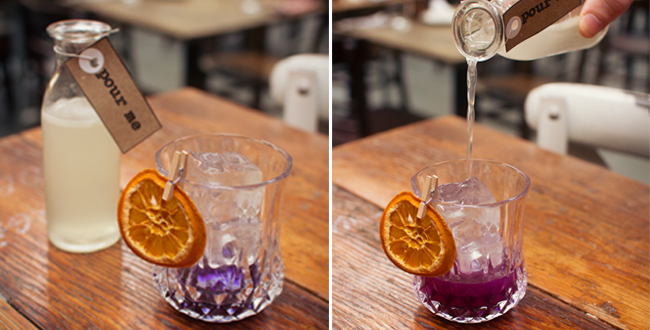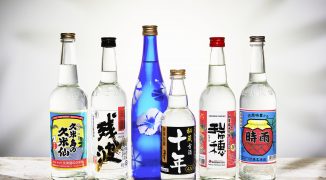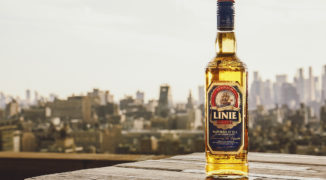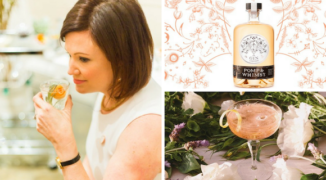We may have mentioned one or two times that blue drinks are poised for a well-deserved comeback: in a craft cocktail environment, serving a drink with the unexpected hue recalls the exact kind of playfulness, irreverence and whimsy that bartenders have happily embraced in recent years. But as much as we love a vivid turquoise daiquiri or a royal blue Collins, many bartenders are still (rightfully) hesitant to experiment when most of the mass-market blue liqueurs still require artificial coloring.
That’s where the humble butterfly pea flower comes in. Long used in Southeast Asian cuisine as an all-natural food coloring agent, the butterfly pea is one of the few ways to add a natural blue tint to food and drink without synthetic dyes or sketchy additives. Not only does it add a blue hue — it also possesses an antioxidant that reacts to acidity by shifting from blue to shades of purple and pink. Needless to say, this is one ingredient perfectly suited for creative bartenders.
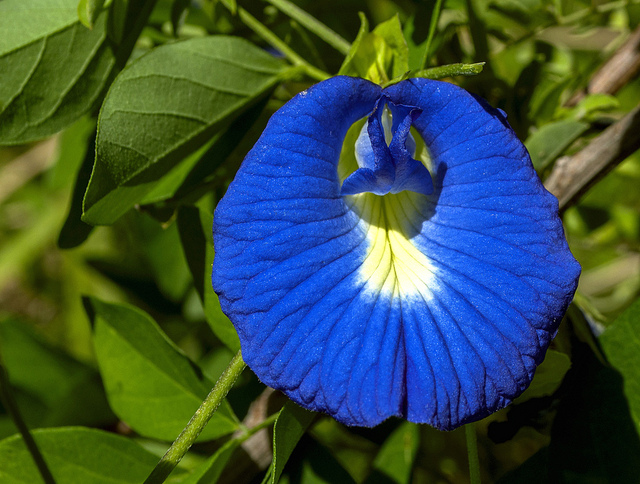 The butterfly pea flower, native to tropical Asia, supplies b’Lure with its mystical color-changing properties. Photo via Swallowtail Garden Seeds
The butterfly pea flower, native to tropical Asia, supplies b’Lure with its mystical color-changing properties. Photo via Swallowtail Garden Seeds
Which is precisely what occurred to Lee Etherington, co-proprietor of flower extract company Wild Hibiscus, when he first came upon the plant. Jocelyn Etherington, who founded and operates the company alongside Lee, explains that his first encounter was a little bit mystical. “About three years ago, he was traveling in central Thailand and a Buddhist Monk came up to him, gave him a Buddhist pendant as a gift and simply said, ‘soon, you will find what you are looking for’,” she says. The next day, Jocelyn says, Lee was chatting with farmers when he noticed a vine sprouting blue flowers growing along the fence. When he asked what it was, his new friends explained that the butterfly pea flower was commonly used in the purple ‘welcome drinks’ (an iced tea called nam doc anchan) that he’d been given at a few hotels in Thailand, and that they changed color with the squeeze of a lemon. “This got Lee very excited about the concept of blue drinks, especially ones that change color,” says Jocelyn. “We immediately discussed the applications and considered, following my recent trips to the USA and participation in Tales of the Cocktail, that this would be of interest with the bar industry here.”
https://instagram.com/p/BGInrnJvKI5/
And right they were. Wild Hibiscus debuted b’Lure in 2013 at Tales of the Cocktail, demonstrating its unique properties by serving a mojito with a b’Lure ice cub, which changed the drink to purple as it melted. “It was a huge hit, and fascinated our tasting room attendees,” says Jocelyn. The launch was perfect timing, explains Jocelyn, given both the new wave of blue drinks and the craft cocktail community backlash against synthetic ingredients. “Coinciding [with the launch] was a new wave of blue drinks being on-trend, whilst some did not like the thought of blue curacao and the like with synthetic colors,” says Jocelyn. “So, whilst this has been great to have blue drinks as a talking point, we also like to educate people about the fact our product is all natural with a little extra magic to turn purple — an equally beautiful color.”
Since then, bartenders around the world have used butterfly pea flower products like b’Lure to create striking cocktails that mesmerize guests as the drinks shift hues, from Canon’s “Magic: the Gathering” to Alchemiq’s foam stencil and b’Lure air. Charleston’s 492 King Street uses it to serve a color-changing pisco sour. Jocelyn also cites The Rook’s Down the Rabbit Hole as a personal favorite — it combines the extract with gin, creme de cacao and blood orange liqueur, then tops it off with a tiny bottle of lemon juice to activate the change in hue.
For some, the question may remain: why? Well, while it might not make sense for every bar to experiment with a product like this, there certainly are some whose guests would appreciate the sensory experience. Jocelyn explains it best:
“Cocktails are a canvas for as many sensors we want to tap into. We use garnishes for dressing a cocktail up, drink ingredients for taste and smell, glassware for presentation, etc., so why not add color changing abilities to the mix? For bars that have a stronger focus on customers’ experience and education about what they are drinking, the more interesting and enticing is sure to have their full attention and customer satisfaction.” In other words, the same reason a bar might take the time to craft 3,000 banana dolphins or seek out miniature pineapple garnishes — it’s just really fun. And at the end of the day, isn’t that what cocktails are all about?
Catch Wild Hibiscus at Tales of the Cocktail in this year’s Bitter Market, and experience the full range of their products at “Eat, Drink and Be Wild” in the Monteleone lobby on Thursday, July 21.


